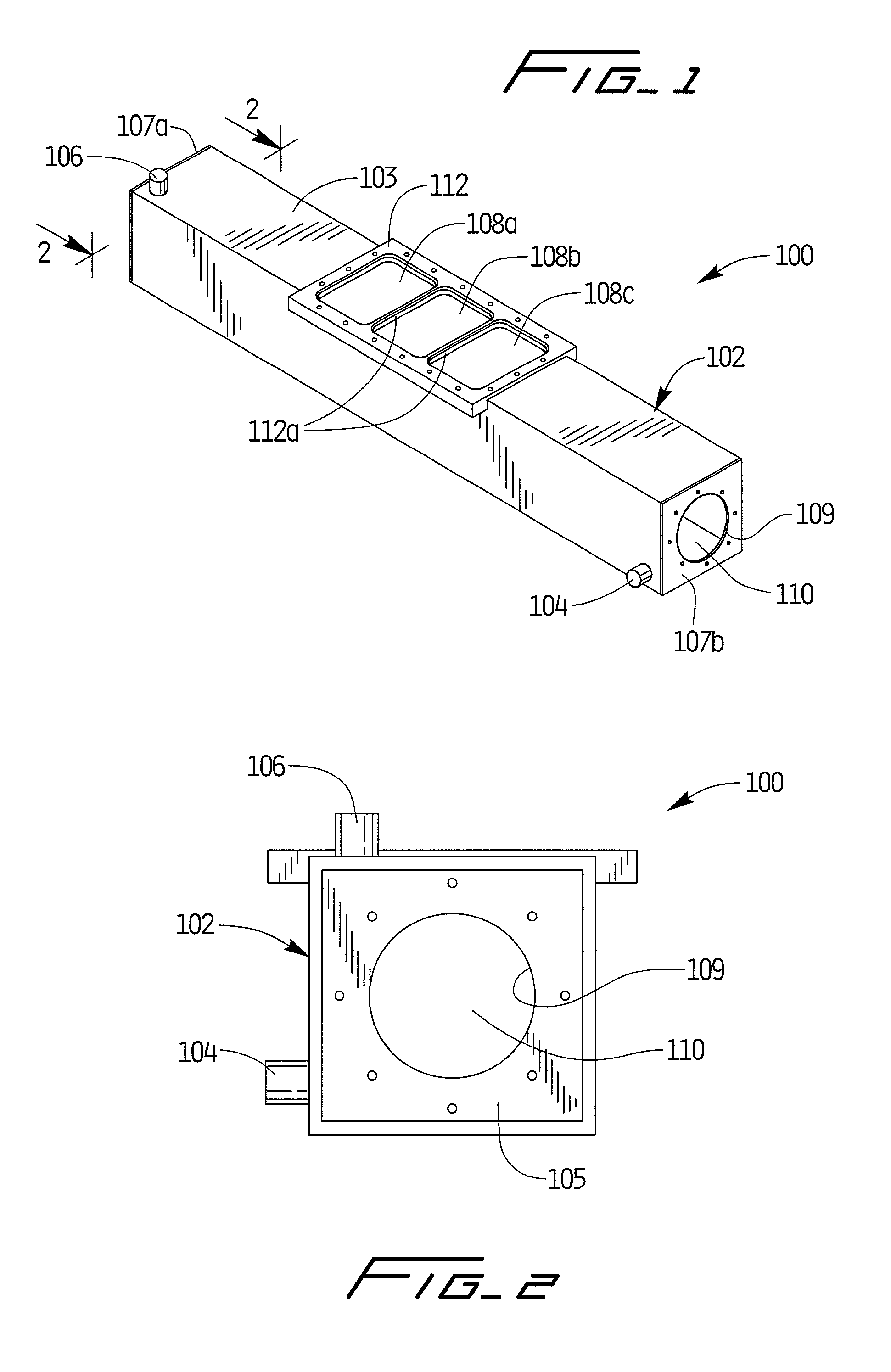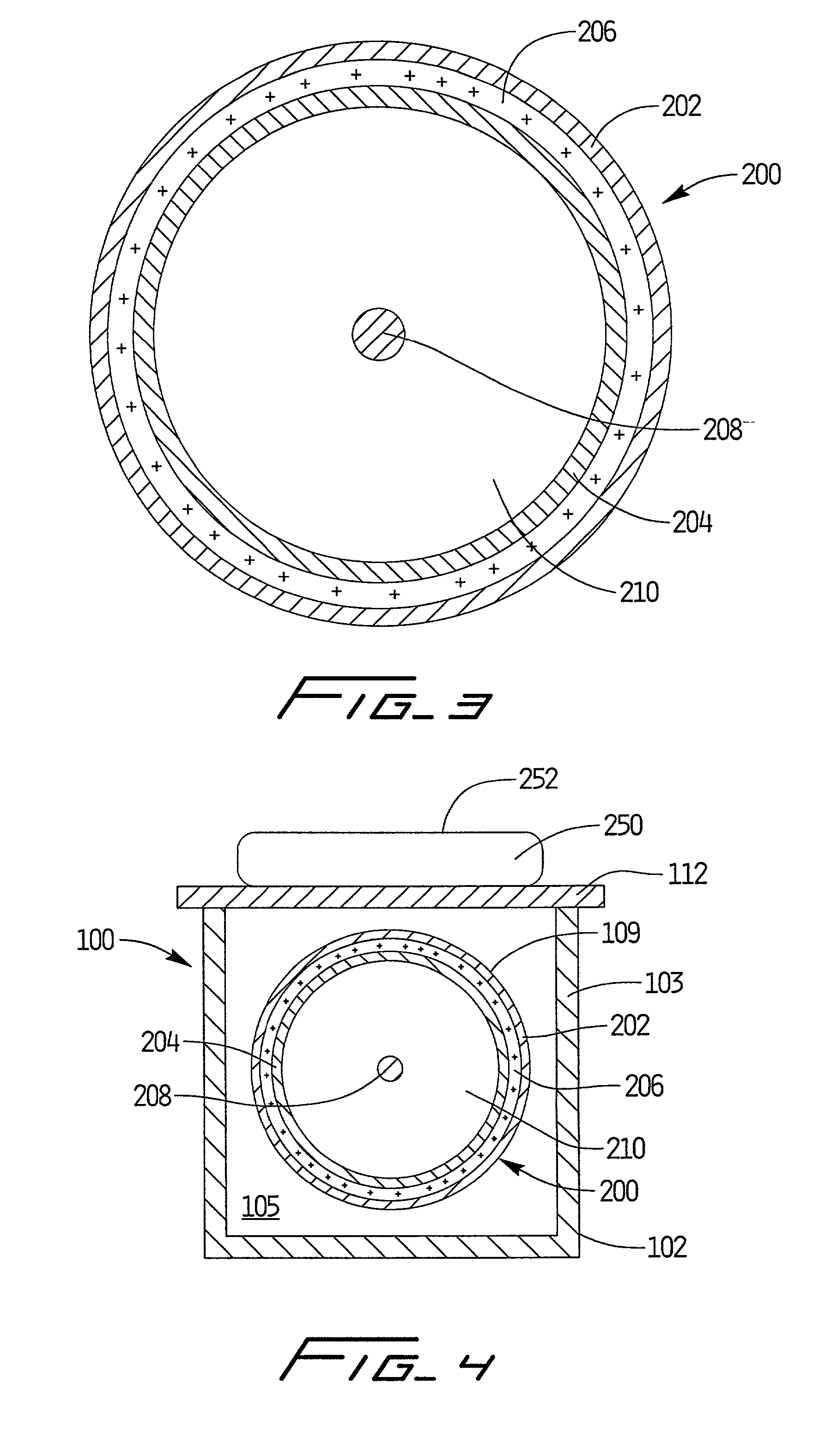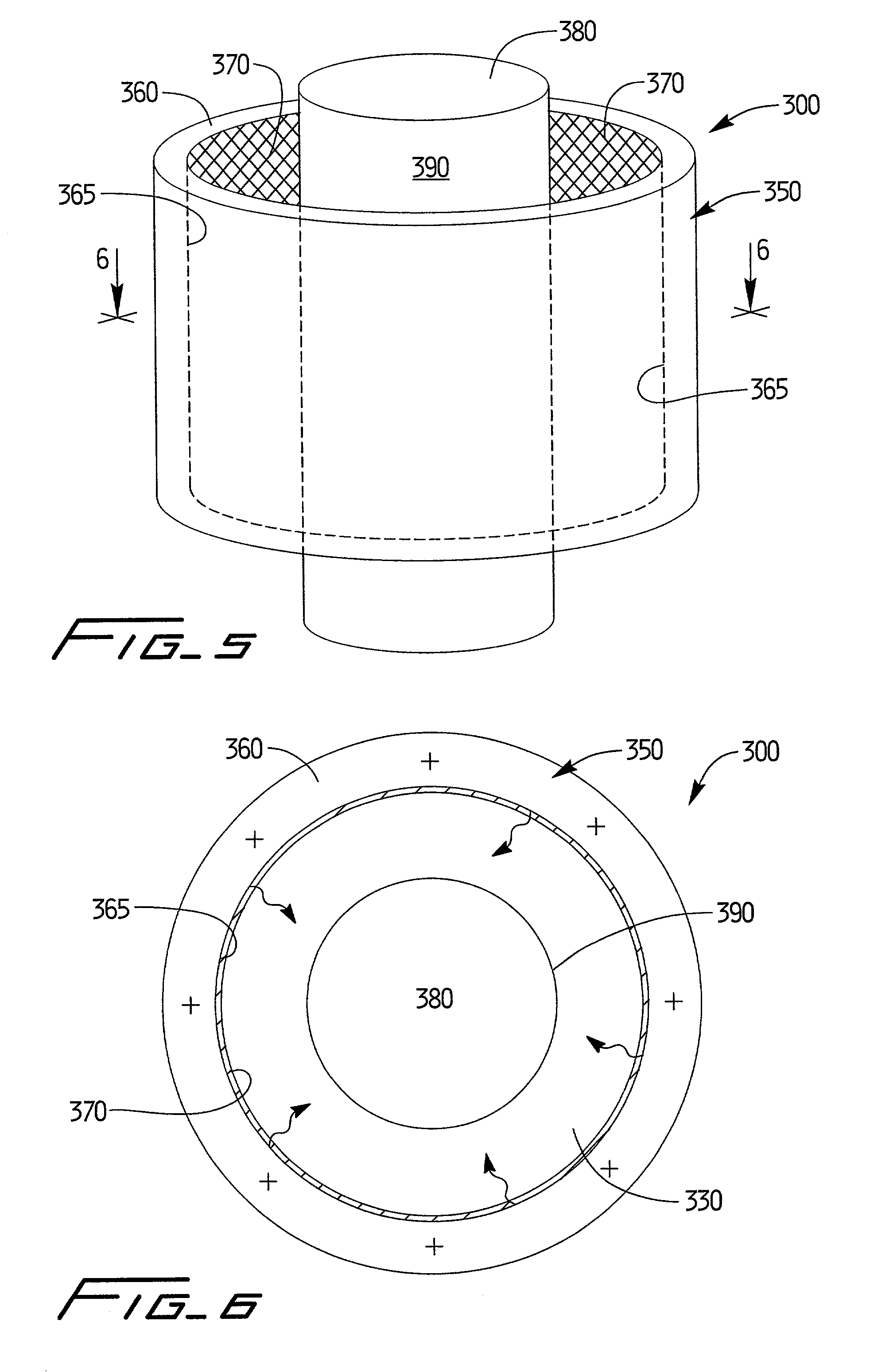Monochromatic fluid treatment systems
a technology of monochromatic fluid and treatment system, which is applied in the direction of water/sewage treatment by irradiation, gas-filled discharge tubes, energy-based chemical/physical/physicochemical processes, etc., can solve the problems of limited donor screening efforts, inability to detect unknown pathogens, and inability to meet the requirements of donor screening, etc., to achieve enhanced operating efficiency and/or processing results, and limit and/or minimize degradation of certain fluid properties and/or components. ,
- Summary
- Abstract
- Description
- Claims
- Application Information
AI Technical Summary
Benefits of technology
Problems solved by technology
Method used
Image
Examples
example 1
[0093] As depicted in FIGS. 1-4, apparatus 100 was utilized with light source 200 positioned therewithin to simulate processing of blood products using a photochemically activated process. XeBr was selected as the excimer gas. The output was filtered using window glass to remove 282 nm light and pass only the emission centered at 320 nm. Blood products contained within conventional blood bags were positioned atop quartz plate 108 and irradiated with monochromatic light from the XeBr excimer light source. Cooling fluid flowing through the treatment apparatus maintained the blood samples at a constant temperature, and prevented any deleterious effect thereto. Platelets were maintained at 24.degree. C., based on the cooling fluid being supplied to the system at that temperature and the platelet bag being in intimate contact with the relatively large surface area of the quartz panels.
[0094] Based on irradiations with the XeBr excimer source using the apparatus of FIGS. 1-4, no clinicall...
example 2
[0096] These experimental studies were designed to show that refractory viral contaminants can be inactivated using 282 nm light in real blood products using the treatment systems of the present disclosure. The system was evaluated for its ability to inactivate porcine parvovirus (PPV). PPV (NADL-2 strain) is an 18-26 nm, non-enveloped, DNA-containing parvovirus, which exhibits a high degree of resistance to a range of physico-chemical reagents. It is not treated using cell washing techniques because it is non-enveloped. PPV inactivation using psoralen and riboflavin are inefficient because the small genome size of the virus requires either larger doses of activating compound or longer irradiation times.
[0097] The strength (titer) of the production lot of virus used in the study was determined by a plaque assay utilizing ST indicator cells. GLP lab standards were maintained. The PPV stock solution used in this example tested positive for identity when tested with a polyclonal antise...
PUM
 Login to View More
Login to View More Abstract
Description
Claims
Application Information
 Login to View More
Login to View More - R&D
- Intellectual Property
- Life Sciences
- Materials
- Tech Scout
- Unparalleled Data Quality
- Higher Quality Content
- 60% Fewer Hallucinations
Browse by: Latest US Patents, China's latest patents, Technical Efficacy Thesaurus, Application Domain, Technology Topic, Popular Technical Reports.
© 2025 PatSnap. All rights reserved.Legal|Privacy policy|Modern Slavery Act Transparency Statement|Sitemap|About US| Contact US: help@patsnap.com



